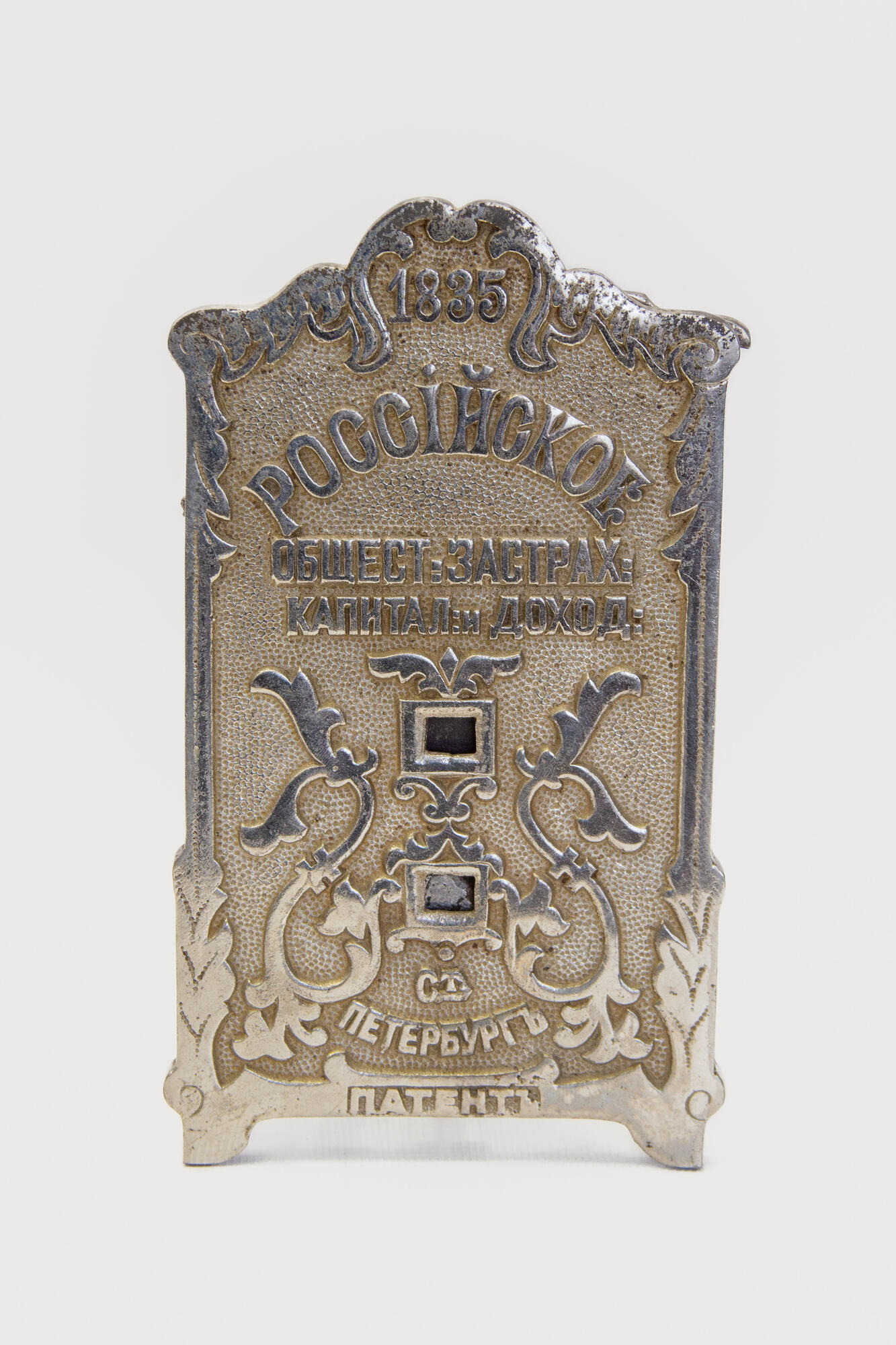This desk calendar was part of another object. It consists of a cast front panel with two windows, decorated with floral ornaments. A mechanism with gears and other parts is installed at the back. To change the date, one needs to only turn the handles a certain direction.
On the front of the calendar there is an inscription “Russian society: insurance: capital: and income: St. Petersburg. Patent. 1835”. In Russia, life insurance was introduced in 1835. In 1834, Ferdinand Schwedersky — a Prussian citizen — addressed a petition to the Ministry of Internal Affairs, in which he requested to establish a joint-stock company in Russia for “insurance of lifetime income and monetary capital, with the provision of some exceptional advantages.”
This proposal and the draft of the statute were considered in the State Council. The council’s decision was in favor of Schwederky’s preposition, and on September 4, 1835, Emperor Nicholas I issued a resolution “so be it”. The new joint-stock insurance company was named “Russian Society for Life and Other Term Income and Cash Capital Insurance”.
The company received an exclusive right to provide life insurance in Russia from the government. For the next 20 years they had the monopoly, so that “no other society neither in Russia nor abroad” had the right to perform operations authorized to the established company. Agents of foreign insurance companies were prohibited from entering into contracts under threat of a fine of 20% from the insured amount. The exception was the written refusal of the company to provide insurance. The only tax was a duty of 25 kopecks per 1000 rubles of the insured amount.
In the late 1880s, there were only four joint-stock insurance companies that offered life insurance: the oldest “Russian Society for Capital and Income Insurance”, the companies “S.-Peterburgskoye”, “Anchor” and “Russia”. In 1889, together they issued a little more than 10 thousand life insurance policies. The final feature of more than 80 years of life insurance history in Russia was summed up by the decree of the Soviet government of November 18, 1919 “On the cancellation of life insurance contracts.” It did not provide any compensation to the owners of the policies.



